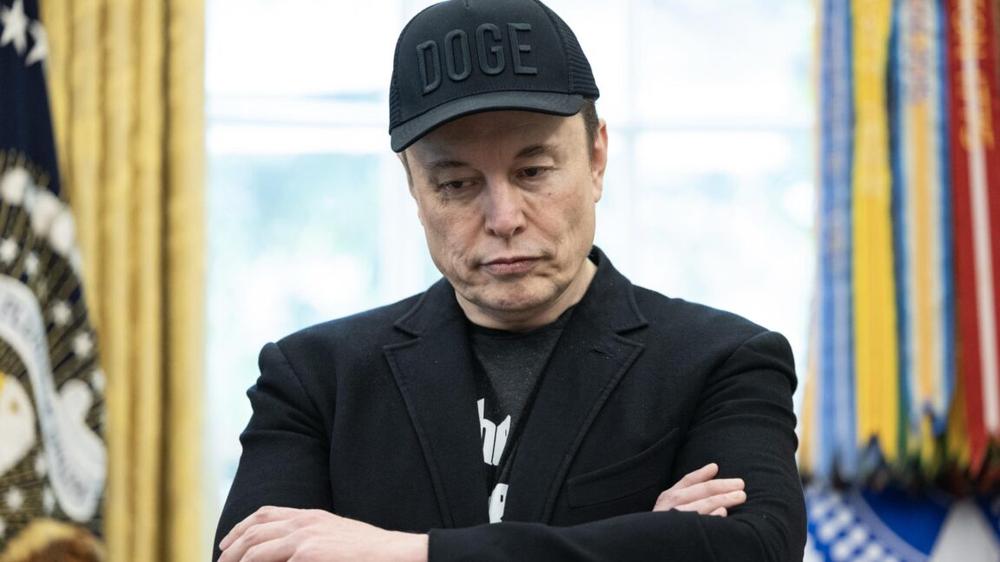Starlink operator SpaceX isn't getting the broadband money it demanded from state governments despite the Trump administration rewriting the rules of a $42 billion grant program. Instead of directing the lion's share of money to Elon Musk's space and satellite company, early results indicate that states still plan to deploy fiber broadband networks to most of their unserved households.
When the Trump administration announced its overhaul of the Broadband Equity, Access, and Deployment (BEAD) program in March, estimates published by The Wall Street Journal suggested that SpaceX could receive $10 billion to $20 billion under the new rules. Musk clearly expected a big windfall; as we've written, SpaceX alleges that Virginia and Louisiana violated the Trump administration's rules by allocating most of the money to fiber providers instead of Starlink's satellite service.
Assuming Virginia and Louisiana don't back down, SpaceX has indicated it will ask the Trump administration to reject their grant proposals. SpaceX might end up filing similar objections in many other states after more of them reveal their plans. A third state, West Virginia, revealed its plan on Tuesday, and SpaceX isn't likely to be happy with it.
A Broadband.io analysis found that West Virginia's plan would direct 99 percent of a $624.7 million outlay to fiber projects, with Starlink receiving $6.4 million. Under the new plan, fiber would be deployed to about 94 percent of 73,701 grant-eligible locations, with Starlink receiving a subsidy to serve the other 6 percent of homes and businesses. An earlier version of West Virginia's plan would have spent $946 million in BEAD funding to serve about 110,000 locations with fiber, but the state scaled it back to meet the Trump administration mandate to lower costs.
Secretary of Commerce Howard Lutnick told states to "take a tech-neutral approach" when evaluating Internet providers and to "provide Internet access for the lowest cost." The National Telecommunications and Information Administration (NTIA), which is part of the Commerce Department, revised the program rules in a way that made it harder for states to justify spending on fiber networks, despite fiber's clear advantage over satellite in speed and capacity.
Fiber-heavy plan “makes complete sense”
Gigi Sohn, a longtime consumer advocate and a former Federal Communications Commission official, cheered West Virginia's fiber-heavy plan. The plan "makes complete sense for a state that has more mountainous land per square mile than any other and is the 3rd most heavily forested state," she wrote. "If you have ever tried to make a cellphone call anywhere in West Virginia, you can understand why the state awarded fiber [at] 94% of eligible locations. The terrain demands it."
When asked if states are testing the boundaries of the Trump administration rules, Sohn told Ars, "I don't think they are trying to test the boundaries at all; in fact, I think the states are trying their very best to stay within the letter and spirit of the NTIA's June 6 Policy Notice and its latest FAQ, but more importantly, the Bipartisan Infrastructure Law, which requires that Priority Broadband Projects be given, well, priority."
Sohn was referring to the US law that created the BEAD program and tasked the NTIA with deciding how to distribute the $42 billion in grant money. Sohn pointed out that the NTIA FAQ says that states may consider an area's topography when deciding whether a grant proposal qualifies as a Priority Broadband Project.
"It instructs the states to look at terrain, tree canopy, etc.," Sohn said. "Particularly in a mountainous and forested state like West Virginia, LEO [low Earth orbit satellite service] isn't going to cut the mustard. States can tailor their analysis of Priority Broadband Projects to the specific project area and applicant."
The NTIA FAQ says states may consider whether a provider "can easily scale speeds over time to meet the evolving connectivity needs of households and businesses and support the deployment of 5G, successor wireless technologies, and other advanced services." The analysis can include project area geography, weather patterns, tree coverage, threats to infrastructure, the Internet provider's statewide capacity, and population density.
SpaceX claims fiber spending is a waste
In its letters to Virginia and Louisiana, SpaceX described fiber spending as a waste because Starlink is offering to serve virtually every grant-eligible home and business at a lower cost. SpaceX said it offered to serve nearly all grant-eligible households in Virginia for $60 million and made a similar offer in Louisiana for about $100 million. Virginia allocated $3.26 million to SpaceX, while Louisiana allocated the firm $7.75 million.
Sohn pointed out that Amazon hasn't raised the same objections as SpaceX even though its Kuiper satellite service is also bidding on grants. Whether Starlink's pressure tactics will work "depends on how willing governors (especially in red states) are willing to back up their SBOs [state broadband offices], and whether other state officials and members of Congress will do the same," she told Ars.
Virginia, Louisiana, and West Virginia have Republican governors. As for Congress, Senate Democrats have accused the Trump administration of forcing states to funnel grant money to Starlink.
The mandate to cut costs is one of numerous changes implemented by the Trump administration. The NTIA ended various Biden-era requirements and told states they will be shut out of the fund if they try to set the rates that ISPs receiving subsidies are allowed to charge people with low incomes. The NTIA changes caused a California lawmaker to drop a proposal to mandate $15 broadband plans, though New York already enforces a similar price law.
Starlink may still get big paydays in Western states
Fiber isn't winning in every state. In Colorado, the percentage of grant-eligible locations that will receive fiber will apparently be reduced from 70 percent to about 40 percent after results from the latest bidding process are announced. Most of the other grant locations would be awarded to LEO satellite services like Starlink, while some would get broadband from fixed wireless providers.
LEO providers bid aggressively in the new "Benefit of the Bargain" round of bidding that was required by the Trump administration rule changes. "They were still aggressive in the last round, but [in the new round, they were] more aggressive on pricing, more aggressive in how many locations they serve," Colorado Broadband Office Executive Director Brandy Reitter said at an event this week.
With the Trump administration demanding a lower average cost per location, fiber providers are less likely to win grants in states where most of the unserved locations are in areas with low population density. "We were never going to get fiber everywhere," Reitter said. "I never thought we were. I thought we would get 98 percent back when I was optimistic and dewy-eyed, but reality kicked me in the teeth."
But even in states where fiber is still the biggest winner, the total costs are being reduced. Louisiana said it reduced projected spending by $250 million, bringing it down to $499 million to cover 127,842 locations. A previous version called for serving 140,000 locations, with about 95 percent of those receiving fiber.
Virginia said it reduced projected costs by $200 million and now plans to allocate $613.3 million. Virginia's total location number has remained the same since last year at about 133,000.
Starlink already available, so why give grants to SpaceX?
Since Starlink is already available nationwide, there's a more obvious benefit from building fiber networks where they do not currently exist. States can direct grant money to Starlink in exchange for guaranteed service availability or deals on equipment and service plans, but satellite network capacity limits could result in reduced performance if too many people use the service.
"Many states are skeptical that giving money to satellite actually provides their residents anything they don't already have," New Street Research analyst Blair Levin, who was the FCC's chief of staff from 1993 to 1997 and oversaw development of the agency's National Broadband Plan in 2010, told Ars this week. However, Levin told us he expects to see satellite to win "a much higher percentage" of the funding in western states where population density is lower and the cost of serving each location higher.
Under its new rules, "NTIA will enforce a lower excessive cost ceiling, making it more difficult for western states to use fiber," he said.
Since reducing costs was one of the Trump administration's stated goals, and states are complying with that mandate, they have a fighting chance to get their updated plans approved even if they face challenges from SpaceX. The NTIA seems to be "motivated by its desire to be able to return a significant amount of the money Congress appropriated for the program to the US Treasury," Levin wrote in an August 15 note to investors about SpaceX's challenge in Virginia.
The NTIA could return a large chunk of the $42 billion even if it doesn't fully accept SpaceX's argument. Levin predicted the NTIA will require states to "incrementally modify their plans" but that the final results in many states will still favor wired broadband providers more than satellite firms.
"We can't be certain what Lutnick will decide but we expect Lutnick to attempt to forge state-by-state compromises," Levin wrote. The US law that created BEAD "provides NTIA (and therefore the Commerce Secretary) enormous latitude for deciding how to accept and or modify the states' plans... We think NTIA will try to compromise by telling VA (and other states) that while they don't have to give satellites everything, they must give them a bit more," he wrote.
A satellite “accounting trick”
Levin argues that the NTIA's treatment of satellite service amounts to an "accounting trick." For purposes of the BEAD program, the NTIA does not count existing satellite service when determining whether an area is already served by broadband. But satellite broadband services can obtain funding to serve the homes and businesses that are judged to be unserved.
"That seems inconsistent, but if satellite performance qualified in determining whether an area was unserved, it could result in all rural areas being defined as served, which would not serve the political interests of the Trump administration," Levin wrote. "On the other hand, if satellite were not qualified for funding, that, apparently, would also not serve the interests of the Trump Administration. SpaceX's comments highlight that oddity in arguing that it basically is already capable of serving all unserved locations."
SpaceX could sue the NTIA if it doesn't like the final outcome. But Levin thinks such a lawsuit won't succeed. He wrote that litigation prospects "are low as the law provides that the decision of NTIA shall be upheld unless 'the decision was procured by corruption, fraud, or undue means.'"

 Maxton Hall: Reunion, il cast torna su Prime Video dal 27 agosto
Maxton Hall: Reunion, il cast torna su Prime Video dal 27 agosto